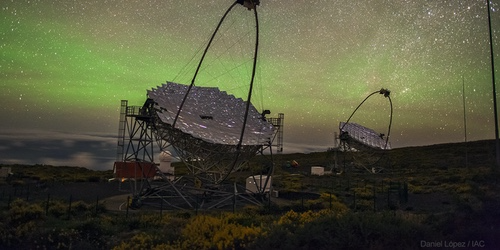Gamma Rays Provide New Quantum Gravity Constraint
To develop a theory of quantum gravity—the holy grail of theoretical physics—researchers might need to sacrifice one of the field’s central principles: the invariance of the speed of light. The predictions of general relativity and quantum theory are expected to coincide somewhere near the Planck energy (about 1.22×1019GeV) (see Focus: The Period of the Universe’s Clock). But some theories indicate consequences at far lower energies, which would manifest as modifications to the propagation speed of very-high-energy gamma rays (VHEGRs). Now, by analyzing the arrival times of the most energetic photons ever measured from a gamma-ray burst (GRB 190114C), the MAGIC Collaboration shows that if the photons’ speed does deviate from the speed of light, it is by a factor of less than 1.7×10−15.
The best place to find evidence of photons traveling faster or slower than the speed of light is in signals that have traversed much of the Universe. This colossal distance is needed to make detectable the tiny potential discrepancy in the speeds of photons of different energies. At 4.5 billion light years, GRB 190114C was closer than other GRBs that have been used to constrain quantum gravity theories. But its photons were more energetic, coming in at 2 TeV, compared with less than 100 GeV for previously measured events. This high energy allowed a unique test of a specific light-speed invariance-violation model in which the relationship between photon energy and velocity is quadratic.
The team found that the speed of photons from GRB 190114C matches the speed of light, indicating that under the invariance-violation model, unification must occur at an energy above 5.6×1010 GeV. They hope that future observations of more distant GRBs will let them tighten the constraint.
This research is published in Physical Review Letters.
–Marric Stephens
Marric Stephens is a Corresponding Editor for Physics Magazine based in Bristol, UK.




